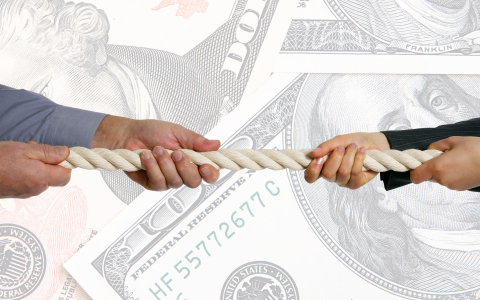
(Bloomberg) - US banks have been locked in a grueling battle for deposits they once took for granted. And one of the toughest combatants in the fight is the federal government.
Yields on one-year US Treasuries broke back above 5% Thursday, and shorter ones were already above 5.2%. That’s on par with or better than the certificates of deposits offered by banks, which averaged 4.38% in the first two weeks of May, according to Morgan Stanley analysts, and problematic for profit margins at hard-pressed firms such as PacWest Bancorp, which is dangling 5.5% for 13-month CDs to keep deposits rolling in.
“We expect deposit pricing pressure to continue building across the banking industry as Treasuries and money-market funds provide attractive alternatives for bank customers,” the Morgan Stanley analysts, led by Betsy Graseck, wrote in a note to clients Tuesday. “This should push overall deposit costs higher and weigh on net interest income across the group over the next several quarters.”
Banks rely on deposits as a cheap source of funding. While banks pay up for CDs as a way of locking in funding for longer, the majority of deposits end up in savings and checking accounts that pay almost nothing. A May 10 survey by Bankrate LLC indicated the average annual percentage yield for a savings account was 0.25%.
“Most Americans and most depositors are still asleep at the switch,” said Gary Zimmerman, founder and chief executive officer of online cash-management platform MaxMyInterest. With the federal funds rate now north of 5%, banks can afford to pay out more than they have been. “There’s no reason every bank in the country shouldn’t be able to pay fed funds and still be profitable, but they’ve become accustomed to paying significantly less than fed funds and being more profitable.”
Still, the most aggressive pace of rate hikes by the Federal Reserve in decades has created opportunities for savers to park cash in higher-yielding vehicles such as money-market funds and Treasuries. That in turn has forced banks to rely more heavily on costly CDs as a source of funding.
The Fed’s hiking cycle has delivered a one-two punch to banks, pressuring both sides of the balance sheet by increasing the cost of their deposits while eroding the value of long-dated bonds and other assets. That dynamic has helped topple four regional banks since early March. The banks still standing will see their profitability take a hit.
In addition to high yields, Treasury bills offer savers another advantage over CDs: the interest they pay is exempt from state and local taxes.
(Updates with one-year Treasuries topping 5% in the second paragraph.)
By Max Reyes and Bre Bradham
With assistance from Alexandra Harris




